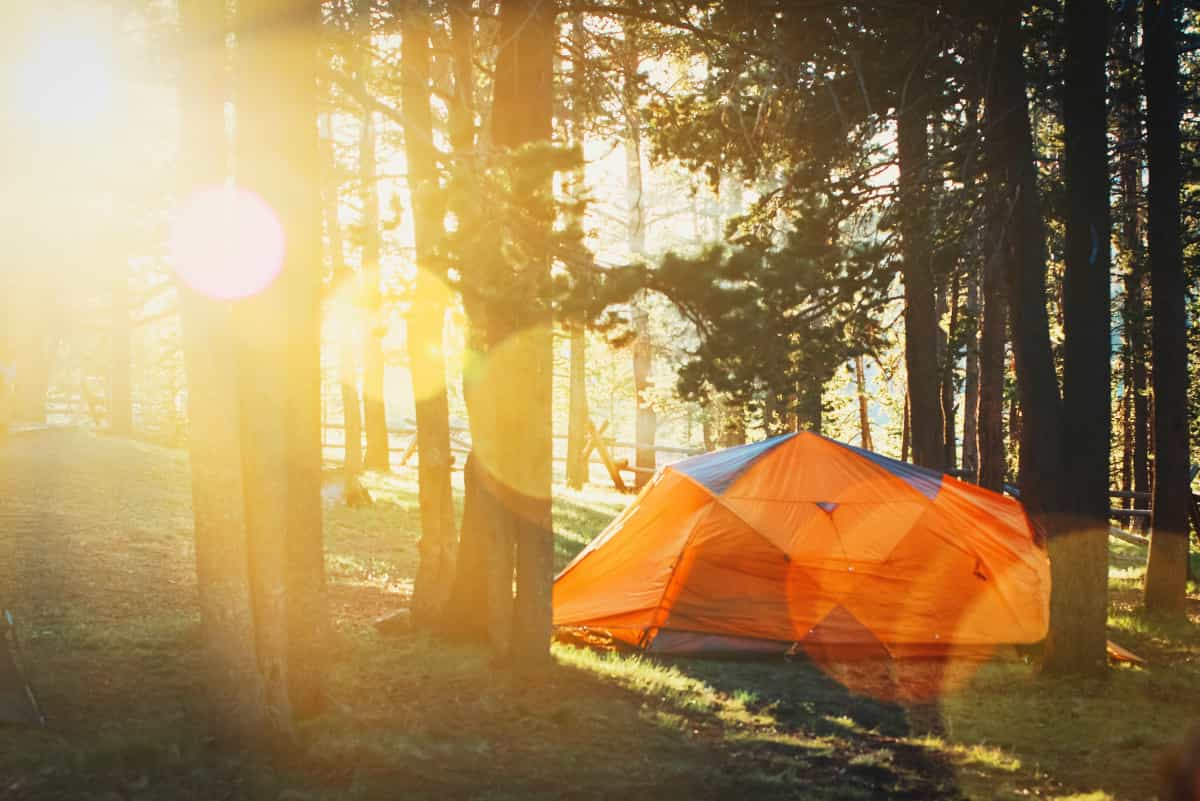How to keep a tent cool
Sunbathing, barbecues and warm summer evenings… there’s a lot to like about camping in hot weather, but what happens when you can’t get your tent to cool down no matter how hard you try? If you’re going camping in the warm summer months or heading to a country where there’s a hotter climate than you’re used to, keeping your tent cool might be a bigger battle than you expected.
Thankfully, it’s not a lost cause. There are a handful of simple methods that will help to keep your tent cool with or without an electric hook-up, from picking the right pitch to proper circulation and accessories such as fans, portable AC units and sunshades.

How to keep your tent cool without electricity
1. Pitch up in the shade.
What’s the first thing you’d do to cool down on a hot walk? Find a patch of shade. Camping works in the same way; your tent is far more likely to overheat in the sun than it is in a fully shaded or partly shaded pitch. Remember, the sun will travel throughout the day, so you might want to have a chat with the campsite staff to find out which pitches get a generous helping of shade throughout the day.
2. Keep your air vents open.
Keeping all of your air vents wide open is the simplest way to keep your tent cool. With more air moving in and out of the tent, you’ll reap the benefits of better circulation and a fresh breeze. While keeping your doors and windows open might sound like a good solution, it’s also an invitation for bugs buzzing around at night, so it’s a good idea to keep your insect and fly door closed if you have them.
3. Take down your tent during the day.
It might sound like a hassle, but taking your tent down as soon as the sun comes up will stop the greenhouse-like effect of your canvas. When you put it back together at the end of the day, you’ll find that the inside is a lot cooler. Saving yourself from sleepless nights in this way requires just a little extra effort.
4. Invest in a sunshade.
If you’re not on board with the idea of assembling and disassembling your tent every day, a sunshade will do some of the heavy work. While basic tarp will work to some extent, reflective materials are best, as they’ll mirror the sun and protect your tent from the heat blast. A sunshade will perform well when it's around a foot/30cm above the top of your tent, so drape it between two trees or use something as a makeshift stake to let the layer of air in between add to the cooling effect.
5. Buy a portable battery-powered fan.
A portable, battery-powered fan can be taken anywhere with you. Keep it to hand, set it up on the floor or hang it from your tent’s roof where there’s a lamp loop. Not only will one of these add a welcome breeze on still days, but they’re also small and lightweight so you won’t need to sacrifice too much room in your luggage.
6. Create your own air con using a bucket of ice.
A bucket of ice will mimic an air conditioner by cooling down the surrounding area. While it might melt quickly in the day, it’s a great strategy at night. If you want to get the best results, spreading ice out across a wide surface and placing it in front of a battery-powered fan will blast the cool air around.
7. If you can, take down your rain fly.
On hot and dry days, there’s no need for your tent’s rain fly. If it’s easy enough to remove and it’s not one of the first things you had to attach to the inside of your tent, removing this extra padding will make the inside of your tent far breezier. Just check the weather forecast beforehand, as you’ll face a race against the clock to get it fitted again if there’s a sudden downpour.
8. Check the breeze.
Placing your tent door facing the breeze will make your tent feel cooler. You don’t necessarily need to check the weather forecast to find out the wind direction; simply lick your finger, raise it to the sky and see which side feels the coldest. That’s where the wind is blowing from, so you’ll want your tent to face the breeze head-on.
9. Ask the site owners where to pitch up.
The campsite owners will be able to tell apart the hot spots from the breezy corners, so having a short chat will help you to narrow down your options.
10. Choose the right tent.
If you haven’t set off yet but you’re expecting a heat wave while you’re away, choosing a tent made from polyester (which is resistant to UV rays) or nylon (a breathable option) will go a long way towards cooling down your tent. Mesh details are another plus for circulation, as is a tent with a large interior.
How to use a portable AC to cool a tent
If you’re holidaying on a pitch with electric hook-up, a portable AC unit will simplify things. To get started, choose a unit that will leave plenty of wriggle room in your tent by checking its dimensions and order an extension cable in advance.
1. Place your AC unit in a corner where it won’t get in the way.
2. Locate a nearby opening, such as a door or window.
3. Pass the condensation pipe through the opening, ensuring that it isn’t a trip hazard.
4. Locate the electric hook-up.
5. Lead the AC unit’s cable through the same opening and plug it into the hook-up, using an extension cable if required.